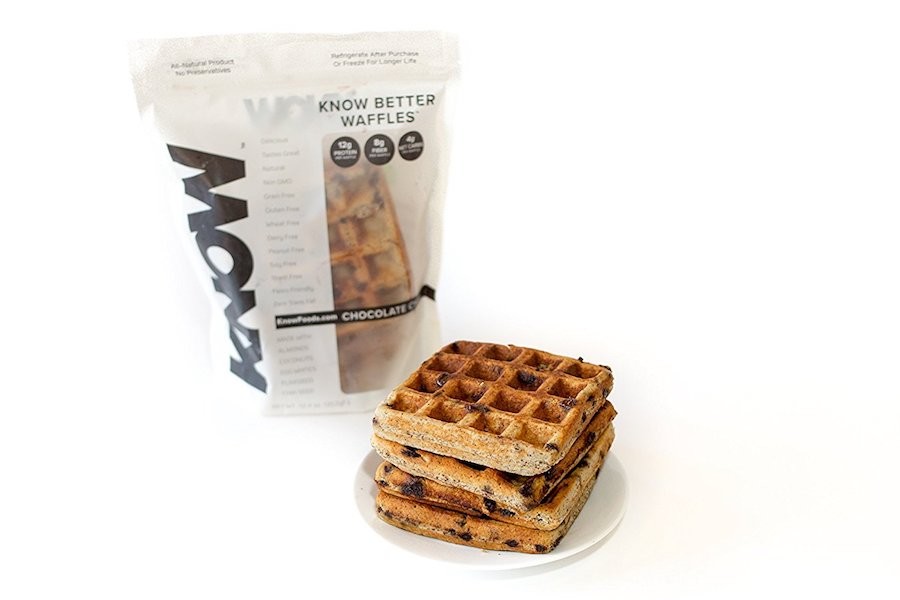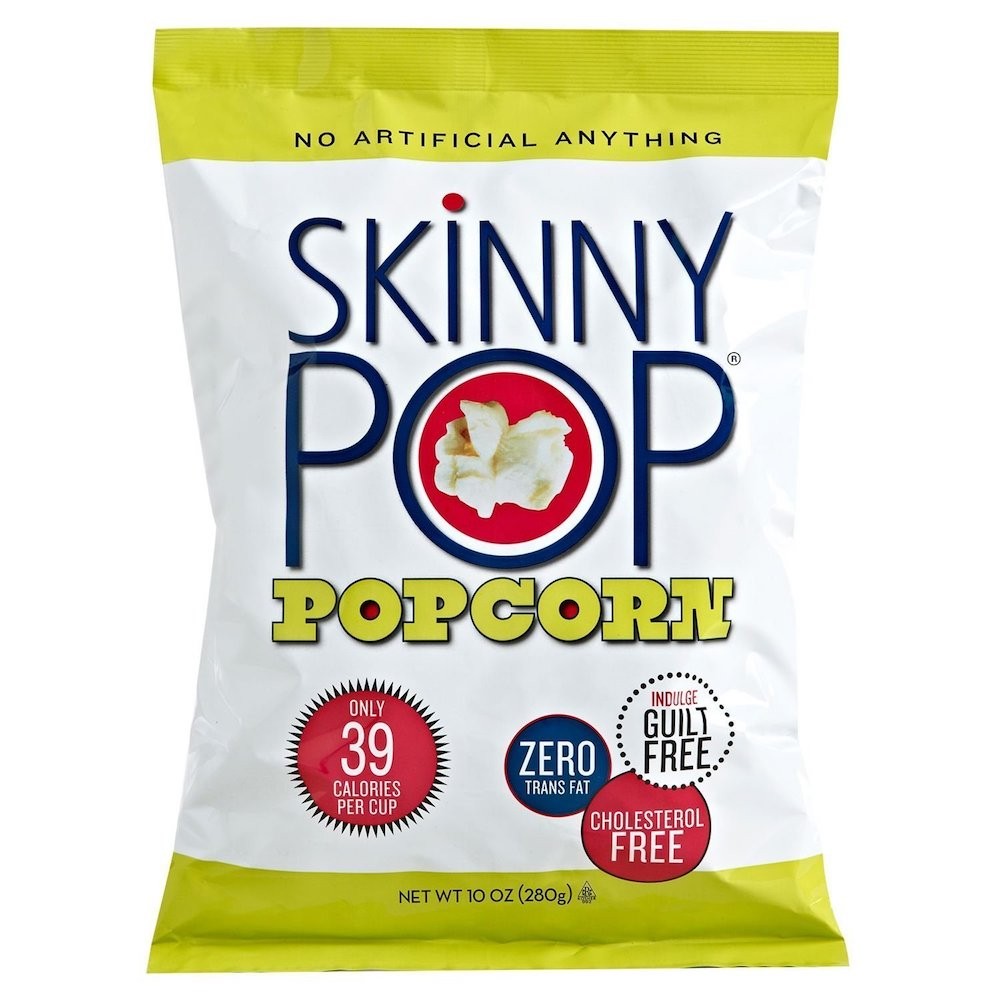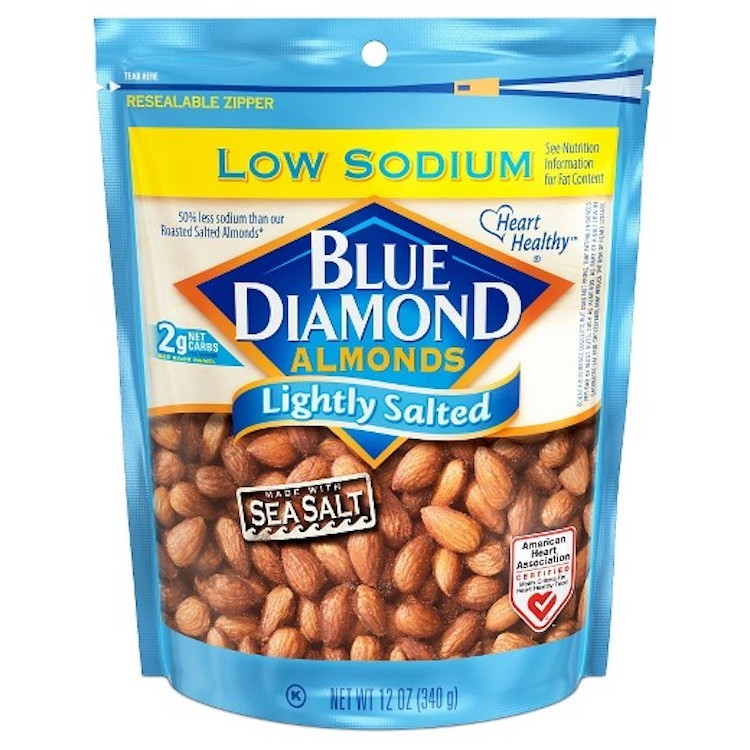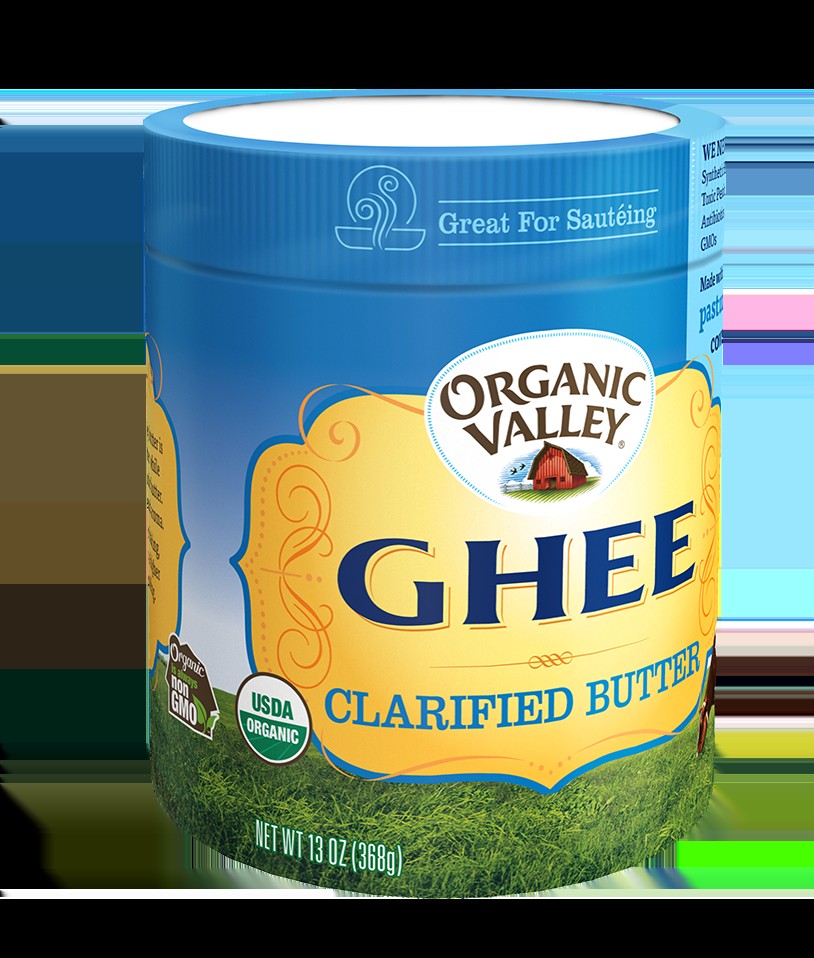Is Popcorn A Paleo Food? Let’s explore the paleo diet, understand if popcorn fits, and uncover delicious paleo-friendly snack alternatives. foods.edu.vn is your ultimate guide to navigate the world of paleo eating with ease. Discover healthy grain-free options and stay on track with your dietary goals, exploring everything from paleo snacks to ancestral nutrition.
1. Understanding the Paleo Diet
The Paleo diet, often called the “caveman diet,” “Stone Age diet,” or “hunter-gatherer diet,” is a nutritional approach rooted in the eating habits of our ancestors from the Paleolithic era, which spanned approximately 2.5 million to 10,000 years ago. This diet emphasizes whole, unprocessed foods that humans would have hunted and gathered.
1.1. Core Principles of the Paleo Diet
-
Emphasis on Whole Foods: The paleo diet prioritizes whole, unprocessed foods. This means focusing on foods in their natural state, avoiding those with added sugars, artificial ingredients, and excessive processing.
-
Lean Proteins: Protein sources in the paleo diet are derived from lean meats, poultry, fish, and seafood. These provide essential amino acids and support muscle growth and repair.
-
Fruits and Vegetables: Fruits and vegetables are a cornerstone of the paleo diet, offering a wide range of vitamins, minerals, antioxidants, and fiber.
-
Healthy Fats: Sources of healthy fats include avocados, nuts, seeds, olive oil, and coconut oil. These fats are crucial for brain health, hormone production, and overall well-being.
-
Exclusion of Grains, Legumes, and Dairy: The paleo diet excludes grains (such as wheat, rice, and corn), legumes (beans, lentils, peanuts), and dairy products. These exclusions are based on the idea that these food groups were introduced relatively late in human history and may contribute to inflammation and digestive issues.
1.2. Foods Allowed on the Paleo Diet
- Meats: Beef, lamb, pork, poultry (chicken, turkey, duck), and game meats (venison, bison).
- Fish and Seafood: Salmon, tuna, mackerel, shrimp, shellfish.
- Fruits: Berries, apples, oranges, bananas, grapes, melons, peaches, pears.
- Vegetables: Leafy greens (spinach, kale, lettuce), cruciferous vegetables (broccoli, cauliflower, Brussels sprouts), root vegetables (sweet potatoes, carrots), and other vegetables (peppers, onions, tomatoes).
- Nuts and Seeds: Almonds, walnuts, pecans, cashews, sunflower seeds, pumpkin seeds, chia seeds, flaxseeds.
- Healthy Fats: Avocados, olive oil, coconut oil, avocado oil, nuts, and seeds.
- Eggs: Chicken eggs, duck eggs, quail eggs.
1.3. Foods Typically Excluded on the Paleo Diet
- Grains: Wheat, rice, corn, oats, barley, rye.
- Legumes: Beans (black beans, kidney beans, chickpeas), lentils, peanuts, soy products (tofu, soy sauce).
- Dairy: Milk, cheese, yogurt, butter.
- Processed Foods: Packaged snacks, sugary drinks, refined sugars, artificial sweeteners, processed meats.
- Potatoes: White potatoes are generally avoided due to their high starch content.
- Refined Vegetable Oils: Soybean oil, corn oil, sunflower oil, safflower oil.
1.4. Rationale Behind the Paleo Diet
The paleo diet is based on the idea that modern humans are genetically mismatched to the modern diet that emerged with the advent of agriculture. Proponents of the paleo diet argue that the rapid shift in dietary habits, characterized by the introduction of grains, legumes, and processed foods, has led to increased rates of chronic diseases such as obesity, type 2 diabetes, heart disease, and autoimmune disorders.
By emulating the diet of our Paleolithic ancestors, the paleo diet aims to promote optimal health by reducing inflammation, improving insulin sensitivity, supporting weight management, and providing essential nutrients from whole, unprocessed foods.
1.5. Potential Benefits of the Paleo Diet
-
Weight Loss: By focusing on whole foods and eliminating processed foods, the paleo diet can promote weight loss and improved body composition.
-
Improved Blood Sugar Control: The paleo diet’s emphasis on low-glycemic foods can help stabilize blood sugar levels and improve insulin sensitivity, which is particularly beneficial for individuals with type 2 diabetes or insulin resistance.
-
Reduced Inflammation: The elimination of grains, legumes, and processed foods may help reduce inflammation in the body, potentially alleviating symptoms of inflammatory conditions such as arthritis and autoimmune diseases.
-
Heart Health: The paleo diet’s focus on lean proteins, healthy fats, and fiber-rich fruits and vegetables can support cardiovascular health by improving cholesterol levels, blood pressure, and other risk factors for heart disease.
-
Increased Nutrient Intake: By prioritizing whole, unprocessed foods, the paleo diet ensures a higher intake of essential vitamins, minerals, antioxidants, and other beneficial compounds.
1.6. Potential Drawbacks and Considerations
-
Nutrient Deficiencies: Strict adherence to the paleo diet may lead to nutrient deficiencies, particularly in calcium and vitamin D (due to the exclusion of dairy) and certain B vitamins (due to the exclusion of grains and legumes).
-
Sustainability and Cost: The paleo diet can be more expensive than conventional diets due to the emphasis on high-quality meats, fish, and fresh produce. Additionally, the strict exclusion of certain food groups may make it challenging to adhere to in social situations.
-
Individual Variability: The paleo diet may not be suitable for everyone, and individual responses can vary. Some individuals may experience digestive issues or other adverse effects when following a strict paleo diet.
-
Lack of Long-Term Studies: While numerous studies have investigated the short-term effects of the paleo diet, there is a lack of long-term research to fully assess its impact on overall health and longevity.
By understanding the core principles, allowed and excluded foods, rationale, potential benefits, and drawbacks of the paleo diet, individuals can make informed decisions about whether it aligns with their health goals and lifestyle. Always consult with a healthcare professional or registered dietitian before making significant changes to your diet.
2. Popcorn: A Closer Look
Popcorn is a type of corn kernel that expands and puffs up when heated. This expansion happens because the kernel contains a small amount of moisture stored inside a starchy endosperm. When heated, the moisture turns into steam, and the pressure builds up until the kernel bursts open, creating the fluffy snack we know and love.
2.1. Nutritional Profile of Popcorn
Popcorn can be a nutritious snack, offering several health benefits. Here’s a detailed look at its nutritional composition:
-
Fiber: Popcorn is a good source of dietary fiber, which aids digestion, helps regulate blood sugar levels, and promotes feelings of fullness. A single serving can provide a significant portion of your daily fiber needs.
-
Whole Grain: Popcorn is considered a whole grain, meaning it contains all three parts of the grain: the bran, germ, and endosperm. Whole grains are associated with a lower risk of heart disease, type 2 diabetes, and certain cancers.
-
Antioxidants: Popcorn contains antioxidants, particularly polyphenols, which help protect the body against oxidative stress and inflammation.
-
Vitamins and Minerals: Popcorn provides essential vitamins and minerals, including magnesium, phosphorus, zinc, and several B vitamins.
-
Low in Calories: Air-popped popcorn is relatively low in calories, making it a good option for those watching their weight.
2.2. Different Types of Popcorn
There are two main types of popcorn kernels: butterfly (or snowflake) and mushroom.
-
Butterfly Popcorn: This is the most common type, characterized by its irregular shape with “wings” that give it a larger surface area. It’s ideal for snacking because of its light and airy texture.
-
Mushroom Popcorn: This type is round and dense, making it more durable. It’s often used for candy coatings because it doesn’t break easily.
2.3. Preparation Methods
The way popcorn is prepared can significantly impact its nutritional value. Here are common methods:
-
Air-Popped: This is the healthiest method as it doesn’t involve added oils. Air-popped popcorn is low in calories and fat.
-
Stovetop Popped: This method involves heating kernels in a pot with oil. While it adds some fat, it can be a healthier option if you use a good quality oil like coconut or olive oil and control the amount.
-
Microwave Popcorn: This is often the most convenient method, but it can be the least healthy. Many microwave popcorn brands contain unhealthy additives, trans fats, and artificial flavors.
2.4. Potential Health Benefits
-
Weight Management: The high fiber content in popcorn can help you feel fuller for longer, reducing overall calorie intake.
-
Improved Digestion: Fiber promotes healthy bowel movements and prevents constipation.
-
Heart Health: Whole grains like popcorn are associated with a reduced risk of heart disease.
-
Blood Sugar Control: The fiber in popcorn helps regulate blood sugar levels, which is beneficial for people with diabetes.
2.5. Considerations and Potential Drawbacks
-
Additives: Many commercial popcorn products contain unhealthy additives such as artificial flavors, trans fats, and excessive salt or sugar.
-
Portion Control: While popcorn can be a healthy snack, it’s easy to overeat. Stick to recommended serving sizes to avoid excess calorie intake.
-
Digestive Issues: Some people may experience digestive discomfort from eating popcorn due to its high fiber content. It’s important to consume it in moderation and stay hydrated.
2.6. Healthy Ways to Enjoy Popcorn
To maximize the health benefits of popcorn, consider these tips:
-
Choose Air-Popped or Stovetop Popped: These methods allow you to control the ingredients and avoid unhealthy additives.
-
Use Healthy Oils: If popping on the stovetop, use coconut oil, olive oil, or avocado oil.
-
Avoid Artificial Additives: Steer clear of microwave popcorn brands with artificial flavors, trans fats, and excessive salt or sugar.
-
Add Natural Seasonings: Enhance the flavor of your popcorn with natural seasonings like herbs, spices, nutritional yeast, or a sprinkle of sea salt.
-
Practice Portion Control: Stick to recommended serving sizes to avoid overeating.
By understanding the nutritional profile, different types, preparation methods, and potential health benefits and drawbacks of popcorn, you can make informed choices about including it in your diet. When prepared and consumed wisely, popcorn can be a healthy and enjoyable snack.
3. Is Popcorn Paleo? Examining the Evidence
The question of whether popcorn fits into a Paleo diet is a complex one, sparking debate among Paleo enthusiasts. To address this question, we must examine the historical context, the botanical classification of corn, and the varying interpretations within the Paleo community.
3.1. Historical Context: When Was Corn Introduced?
The Paleo diet is based on the premise of eating foods that were available to our Paleolithic ancestors before the advent of agriculture. Corn, the grain from which popcorn is derived, was not part of the human diet until relatively recently in our evolutionary history.
Corn originated in Mexico around 9,000 years ago from a wild grass called teosinte. The domestication and cultivation of corn marked a significant shift in human dietary habits, coinciding with the rise of agriculture. This timeline places corn outside the Paleolithic era, which ended approximately 10,000 years ago.
3.2. Botanical Classification: Is Corn a Grain?
From a botanical perspective, corn is indeed a grain. Grains are the edible seeds of grasses belonging to the Poaceae family. This classification means that corn shares characteristics with other grains like wheat, rice, oats, and barley, which are typically excluded from the Paleo diet.
The Paleo diet excludes grains because they are relatively recent additions to the human diet and are believed to contribute to inflammation, digestive issues, and other health problems.
3.3. Arguments Against Popcorn in the Paleo Diet
-
Grain Exclusion: The primary argument against including popcorn in the Paleo diet is that it is a grain. The Paleo diet typically excludes all grains due to their relatively recent introduction into the human diet and potential negative health effects.
-
Nutrient Density: While popcorn does offer some nutrients like fiber and antioxidants, it is not as nutrient-dense as other Paleo-friendly foods like fruits, vegetables, and lean proteins.
-
Potential for Digestive Issues: Grains, including corn, contain compounds like phytic acid and lectins that can interfere with nutrient absorption and cause digestive issues in some individuals.
3.4. Arguments for Moderate Inclusion
-
Fiber Content: Popcorn is a good source of dietary fiber, which is essential for digestive health and can help regulate blood sugar levels. Fiber is often lacking in modern diets, so popcorn can be a convenient way to increase fiber intake.
-
Antioxidants: Popcorn contains antioxidants, particularly polyphenols, which can help protect the body against oxidative stress and inflammation.
-
Low-Calorie Snack: Air-popped popcorn is relatively low in calories, making it a satisfying snack option for those watching their weight.
-
Moderation and Personal Tolerance: Some Paleo proponents argue that moderate consumption of certain foods, including popcorn, may be acceptable if an individual tolerates them well and they don’t cause adverse health effects.
3.5. Different Interpretations of the Paleo Diet
It’s important to recognize that there is no single, universally accepted definition of the Paleo diet. Different individuals and Paleo communities may have varying interpretations and guidelines.
-
Strict Paleo: Those following a strict Paleo diet adhere closely to the principles of excluding all grains, legumes, dairy, and processed foods. They would likely avoid popcorn altogether.
-
Modified Paleo: A more lenient approach, sometimes called “Primal” or “Paleo-ish,” may allow for some flexibility in food choices, including occasional consumption of certain grains or legumes. Individuals following a modified Paleo diet may choose to include popcorn in moderation if they tolerate it well.
3.6. Expert Opinions
-
Dr. Loren Cordain: As the founder of the Paleo diet movement, Dr. Cordain generally advises against consuming grains, including corn.
-
Mark Sisson: Author of “The Primal Blueprint,” Mark Sisson takes a more flexible approach, suggesting that some individuals may tolerate certain foods like white rice or corn in moderation.
3.7. How to Decide if Popcorn Fits Your Paleo Diet
Ultimately, the decision of whether to include popcorn in your Paleo diet depends on your individual goals, preferences, and tolerance levels. Here are some factors to consider:
-
Health Goals: If your primary goal is to strictly adhere to the principles of the Paleo diet and minimize inflammation, you may choose to avoid popcorn.
-
Personal Tolerance: If you tolerate popcorn well and it doesn’t cause digestive issues or other adverse effects, you may choose to include it in moderation.
-
Nutrient Density: Consider the overall nutrient density of your diet. If you are consuming a wide variety of nutrient-rich Paleo foods, occasional popcorn consumption may not significantly impact your health.
-
Preparation Method: If you choose to include popcorn, opt for air-popped or stovetop-popped varieties made with healthy oils and avoid additives like artificial flavors, trans fats, and excessive salt or sugar.
By examining the historical context, botanical classification, arguments for and against inclusion, and different interpretations of the Paleo diet, you can make an informed decision about whether popcorn fits into your individual dietary approach.
4. Paleo-Friendly Alternatives to Popcorn
If you’re following a Paleo diet and want to avoid popcorn, there are plenty of delicious and satisfying alternatives that will keep you on track. These options provide similar textures and flavors while adhering to Paleo principles.
4.1. Roasted Nuts and Seeds
Nuts and seeds are excellent Paleo-friendly snacks that offer a satisfying crunch and a wealth of nutrients.
-
Almonds: Rich in vitamin E, magnesium, and healthy fats, almonds are a versatile snack that can be enjoyed roasted, salted, or plain.
-
Walnuts: Known for their high omega-3 fatty acid content, walnuts support brain health and reduce inflammation.
-
Pecans: These buttery nuts are a good source of antioxidants and minerals like zinc and manganese.
-
Pumpkin Seeds (Pepitas): Packed with magnesium, zinc, and iron, pumpkin seeds are great for boosting immunity and supporting bone health.
-
Sunflower Seeds: High in vitamin E and selenium, sunflower seeds are a nutritious and delicious snack.
Preparation Tips:
-
Roasting: Roast nuts and seeds in the oven at 350°F (175°C) for 10-15 minutes, or until golden brown and fragrant.
-
Seasoning: Add a sprinkle of sea salt, herbs, or spices for extra flavor.
-
Storage: Store roasted nuts and seeds in an airtight container to maintain their crunchiness.
4.2. Vegetable Chips
Vegetable chips are a creative way to enjoy your favorite veggies in a crunchy, snackable form.
-
Sweet Potato Chips: Sweet potatoes are packed with vitamin A and fiber, making them a nutritious and satisfying snack.
-
Kale Chips: These crispy chips are a great source of vitamins K and C, as well as antioxidants.
-
Beet Chips: Beets are rich in nitrates, which can help lower blood pressure and improve athletic performance.
-
Carrot Chips: Carrots are loaded with beta-carotene, which is converted to vitamin A in the body and supports eye health.
-
Zucchini Chips: Zucchini is low in calories and high in vitamins and minerals, making it a healthy snacking option.
Preparation Tips:
-
Slicing: Use a mandoline or sharp knife to slice vegetables thinly and evenly.
-
Seasoning: Toss the sliced vegetables with olive oil, sea salt, and your favorite spices.
-
Baking: Bake the chips at 300°F (150°C) for 20-30 minutes, or until crispy.
-
Dehydrating: For a raw Paleo option, dehydrate the chips at 135°F (57°C) for 6-8 hours, or until they are crispy.
4.3. Coconut Flakes
Coconut flakes are a naturally sweet and satisfying snack that provides healthy fats and fiber.
-
Unsweetened Coconut Flakes: These are a great option for those watching their sugar intake.
-
Toasted Coconut Flakes: Toasting coconut flakes enhances their flavor and adds a satisfying crunch.
Preparation Tips:
-
Toasting: Spread coconut flakes on a baking sheet and toast in the oven at 350°F (175°C) for 5-10 minutes, or until golden brown.
-
Seasoning: Add a sprinkle of cinnamon or nutmeg for extra warmth and flavor.
-
Versatility: Use coconut flakes as a topping for salads, smoothies, or yogurt (if you include dairy in your modified Paleo diet).
4.4. Pork Rinds
Pork rinds, also known as chicharrones, are a crispy, high-protein snack made from fried pig skin.
-
Protein-Rich: Pork rinds are an excellent source of protein, which helps you feel full and satisfied.
-
Low-Carb: With virtually zero carbohydrates, pork rinds are a great option for those following a low-carb or ketogenic Paleo diet.
-
Flavorful: Pork rinds come in a variety of flavors, from plain salted to spicy chili lime.
Considerations:
-
Quality: Choose pork rinds made from high-quality pork and natural seasonings.
-
Moderation: While pork rinds can be a healthy snack, they are high in fat and sodium, so consume them in moderation.
4.5. Olives
Olives are a savory and satisfying snack that provides healthy fats and antioxidants.
-
Healthy Fats: Olives are rich in monounsaturated fats, which support heart health and reduce inflammation.
-
Antioxidants: Olives contain antioxidants like oleuropein, which has anti-inflammatory and antimicrobial properties.
-
Variety: Choose from a variety of olives, such as Kalamata, green, or black olives, to suit your taste preferences.
Preparation Tips:
-
Marinating: Marinate olives in olive oil, herbs, and garlic for added flavor.
-
Stuffing: Stuff olives with almonds, cheese (if you include dairy), or roasted peppers for a more substantial snack.
-
Storage: Store olives in their brine in the refrigerator to maintain their freshness.
4.6. Jerky
Jerky is a convenient and protein-packed snack made from dried meat.
-
High-Protein: Jerky is an excellent source of protein, which helps you feel full and satisfied.
-
Portable: Jerky is easy to take on the go, making it a great option for travel or outdoor activities.
-
Variety: Choose from a variety of jerky options, such as beef, turkey, or salmon jerky.
Considerations:
-
Ingredients: Look for jerky made from grass-fed meat and natural seasonings, avoiding those with added sugars, preservatives, or artificial flavors.
-
Sodium: Be mindful of the sodium content in jerky, as it can be high.
4.7. Fruit with Nut Butter
Pairing fruit with nut butter is a classic Paleo snack that provides a balance of carbohydrates, healthy fats, and protein.
-
Apples with Almond Butter: This combination is a crowd-pleaser, offering a sweet and creamy treat.
-
Bananas with Walnut Butter: The potassium in bananas pairs perfectly with the omega-3 fatty acids in walnuts.
-
Berries with Cashew Butter: This antioxidant-rich snack is a great way to satisfy your sweet tooth.
Preparation Tips:
-
Nut Butter: Choose nut butters made from 100% nuts, without added sugars, oils, or preservatives.
-
Portion Control: Stick to a tablespoon or two of nut butter per serving to manage your calorie intake.
4.8. Hard-Boiled Eggs
Hard-boiled eggs are a simple and nutritious snack that provides high-quality protein and essential nutrients.
-
Protein-Rich: Eggs are a complete protein source, containing all nine essential amino acids.
-
Versatile: Enjoy hard-boiled eggs on their own or with a sprinkle of sea salt and pepper.
Preparation Tips:
-
Cooking: Boil eggs for 10-12 minutes, then immediately transfer them to an ice bath to stop the cooking process and make them easier to peel.
-
Storage: Store hard-boiled eggs in the refrigerator for up to a week.
4.9. Avocados
Avocados are a creamy and satisfying snack that provides healthy fats, fiber, and essential nutrients.
-
Healthy Fats: Avocados are rich in monounsaturated fats, which support heart health and reduce inflammation.
-
Fiber: Avocados are a good source of fiber, which promotes digestive health and helps you feel full.
-
Versatile: Enjoy avocados on their own, mashed with sea salt and lime juice, or as a topping for salads and other dishes.
4.10. Seaweed Snacks
Seaweed snacks are a crispy and savory option that provides essential minerals and antioxidants.
-
Nutrient-Rich: Seaweed is a good source of iodine, which is essential for thyroid health.
-
Low-Calorie: Seaweed snacks are low in calories, making them a guilt-free option.
-
Variety: Choose from a variety of flavors, such as sea salt, sesame, or wasabi.
By exploring these Paleo-friendly alternatives to popcorn, you can enjoy a variety of delicious and nutritious snacks that support your health goals and keep you satisfied between meals.
5. Incorporating Snacks into a Paleo Lifestyle
Snacks can play a crucial role in maintaining energy levels, preventing overeating at meals, and satisfying cravings when following a Paleo lifestyle. However, it’s essential to choose the right types of snacks and incorporate them mindfully into your daily routine.
5.1. The Importance of Mindful Snacking
Mindful snacking involves paying attention to your body’s hunger cues and choosing snacks that provide nourishment and satisfaction. This approach can help you avoid mindless eating and make healthier choices.
-
Listen to Your Body: Before reaching for a snack, ask yourself if you’re truly hungry or if you’re eating out of boredom, stress, or habit.
-
Choose Nutrient-Dense Snacks: Opt for snacks that provide a good balance of protein, healthy fats, and fiber.
-
Savor Your Snack: Take the time to enjoy your snack, paying attention to its taste, texture, and aroma.
-
Avoid Distractions: Turn off the TV, put away your phone, and focus on your snack to avoid overeating.
5.2. Timing Your Snacks
Timing your snacks strategically can help you maintain stable blood sugar levels, prevent energy crashes, and manage your appetite.
-
Mid-Morning Snack: If you find yourself feeling hungry between breakfast and lunch, a mid-morning snack can help you stay focused and energized.
-
Mid-Afternoon Snack: An afternoon snack can prevent the afternoon slump and keep you from overeating at dinner.
-
Pre-Workout Snack: If you exercise regularly, a pre-workout snack can provide the energy you need to perform your best.
-
Post-Workout Snack: A post-workout snack can help replenish glycogen stores and support muscle recovery.
5.3. Portion Control
Practicing portion control is essential for managing your calorie intake and preventing weight gain.
-
Read Labels: Pay attention to serving sizes on packaged snacks and stick to the recommended portion.
-
Use Small Plates and Bowls: Serving your snacks on smaller plates and bowls can help you visually manage your portions.
-
Pre-Portion Snacks: Divide snacks into individual servings ahead of time to avoid mindless eating.
-
Avoid Eating Directly from the Package: Eating directly from a large bag or container can make it difficult to track how much you’re consuming.
5.4. Meal Planning
Planning your meals and snacks ahead of time can help you make healthier choices and avoid impulsive decisions.
-
Create a Snack Schedule: Plan your snacks for the week and write them down in your planner or on a whiteboard.
-
Prep Snacks in Advance: Prepare your snacks ahead of time and store them in the refrigerator or pantry for easy access.
-
Pack Snacks for On-the-Go: If you’re going to be away from home, pack a variety of healthy snacks to avoid unhealthy options.
5.5. Snacking for Specific Needs
Consider your individual needs and preferences when choosing snacks.
-
For Weight Loss: Choose snacks that are high in protein and fiber to help you feel full and satisfied.
-
For Energy: Opt for snacks that provide a quick source of energy, such as fruit or a small amount of honey.
-
For Muscle Recovery: Choose snacks that are high in protein to support muscle repair and growth.
-
For Digestive Health: Opt for snacks that are high in fiber to promote healthy digestion.
5.6. Snacking on the Go
When you’re on the go, it’s important to have healthy snack options readily available to avoid unhealthy temptations.
-
Trail Mix: Combine nuts, seeds, and dried fruit for a convenient and nutritious snack.
-
Energy Bars: Look for Paleo-friendly energy bars made from whole foods and natural sweeteners.
-
Fruit: Apples, bananas, and oranges are easy to transport and require no preparation.
-
Jerky: Jerky is a portable and protein-packed snack that can be stored at room temperature.
-
Nut Butter Packets: Individual packets of nut butter are easy to pack and can be paired with fruit or vegetables.
5.7. Healthy Snack Recipes
Experiment with different recipes to create delicious and nutritious Paleo-friendly snacks.
-
Coconut Energy Balls: Combine shredded coconut, nut butter, honey, and chia seeds for a quick and easy energy boost.
-
Sweet Potato Fries: Slice sweet potatoes into fries, toss with olive oil and spices, and bake until crispy.
-
Stuffed Dates: Fill Medjool dates with nut butter and sprinkle with coconut flakes for a sweet and satisfying treat.
-
Avocado Toast: Spread mashed avocado on a slice of sweet potato toast and top with sea salt and red pepper flakes.
5.8. Staying Hydrated
Don’t forget to stay hydrated throughout the day, as thirst can often be mistaken for hunger.
-
Water: Keep a water bottle with you and sip on it throughout the day.
-
Herbal Tea: Enjoy a cup of herbal tea between meals to stay hydrated and satisfied.
-
Sparkling Water: Add a splash of fruit juice or a few slices of fruit to sparkling water for a refreshing and hydrating beverage.
By incorporating these tips into your Paleo lifestyle, you can enjoy snacks mindfully and nutritiously, supporting your health goals and keeping you feeling satisfied and energized throughout the day.
6. Expert Opinions on Popcorn and the Paleo Diet
The debate over whether popcorn fits into a Paleo diet often involves consulting with experts in the field. These experts offer insights based on their understanding of Paleo principles, nutritional science, and individual health considerations.
6.1. Dr. Loren Cordain
Dr. Loren Cordain is widely regarded as the founder of the modern Paleo diet movement. His research and publications have significantly influenced the understanding and practice of Paleo eating.
-
Grain Exclusion: Dr. Cordain generally advises against consuming grains, including corn, on the Paleo diet. He emphasizes the importance of adhering to the dietary patterns of our Paleolithic ancestors, who did not consume grains.
-
Inflammation and Autoimmunity: Dr. Cordain suggests that grains can contribute to inflammation, digestive issues, and autoimmune responses in some individuals.
-
Focus on Nutrient-Dense Foods: Dr. Cordain advocates for prioritizing nutrient-dense foods like lean proteins, fruits, vegetables, and healthy fats, which are more consistent with the Paleo diet.
6.2. Mark Sisson
Mark Sisson is the author of “The Primal Blueprint” and a prominent figure in the Paleo and Primal communities. His approach is often seen as more flexible than strict Paleo guidelines.
-
Primal Blueprint: Sisson’s Primal Blueprint allows for some flexibility in food choices, including occasional consumption of certain foods that may not be strictly Paleo.
-
Individual Tolerance: Sisson suggests that some individuals may tolerate certain foods like white rice or corn in moderation, provided they do not experience adverse health effects.
-
Prioritize Nutrient Density: Sisson emphasizes the importance of prioritizing nutrient-dense foods but acknowledges that occasional indulgences can be part of a sustainable dietary approach.
6.3. Robb Wolf
Robb Wolf is a former research biochemist and author of “The Paleo Solution.” He is known for his evidence-based approach to nutrition and health.
-
Contextual Approach: Wolf advocates for a contextual approach to the Paleo diet, taking into account individual needs, goals, and health conditions.
-
Potential for Cross-Reactivity: Wolf cautions that grains like corn may trigger cross-reactivity in individuals with gluten sensitivity or autoimmune conditions.
-
Focus on Gut Health: Wolf emphasizes the importance of gut health and suggests that individuals with compromised gut function may need to be more cautious about consuming grains.
6.4. Chris Kresser
Chris Kresser is a licensed acupuncturist and functional medicine practitioner. He is known for his expertise in ancestral nutrition and gut health.
-
Emphasis on Bio-Individuality: Kresser emphasizes the importance of bio-individuality, recognizing that dietary needs and tolerances can vary from person to person.
-
Potential for Harm: Kresser suggests that grains like corn may not be inherently harmful for everyone but can pose problems for individuals with specific health conditions, such as autoimmune diseases or digestive disorders.
-
Focus on Whole Foods: Kresser advocates for a diet based on whole, unprocessed foods, with an emphasis on nutrient density and individual tolerance.
6.5. Sarah Ballantyne, PhD (The Paleo Mom)
Sarah Ballantyne, also known as The Paleo Mom, is a health expert, author, and advocate for the Paleo diet. She holds a PhD in medical biophysics.
-
Autoimmune Protocol (AIP): Ballantyne is known for her work on the Autoimmune Protocol (AIP), a stricter version of the Paleo diet designed to reduce inflammation and support healing in individuals with autoimmune diseases.
-
Grain Exclusion: Ballantyne strongly advises against consuming grains, including corn, on the AIP diet due to their potential to trigger inflammation and immune responses.
-
Emphasis on Gut Health: Ballantyne emphasizes the importance of gut health in managing autoimmune conditions and suggests that grains can contribute to gut dysbiosis and leaky gut.
6.6. Summary of Expert Opinions
| Expert | Opinion on Popcorn | Rationale | Dietary Approach |
|---|---|---|---|
| Dr. Loren Cordain | Generally Avoid | Grains were not part of the Paleolithic diet and may contribute to inflammation. | Strict Paleo |
| Mark Sisson | Moderate Inclusion | Some individuals may tolerate corn in moderation if they experience no adverse effects. | Primal Blueprint |
| Robb Wolf | Contextual | Consider individual needs, goals, and potential for cross-reactivity in sensitive individuals. | Evidence-Based Paleo |
| Chris Kresser | Bio-Individual | Grain consumption depends on individual tolerance and health conditions. Focus on whole, unprocessed foods. | Functional Medicine |
| Sarah Ballantyne | Strongly Avoid | Grains may trigger inflammation and immune responses, especially in individuals with autoimmune diseases. | Autoimmune Protocol (AIP) |





6.7. How to Interpret Expert Advice
When considering expert advice on whether to include popcorn in your Paleo diet, keep the following points in mind:
-
Individual Needs: Recognize that dietary needs and tolerances can vary from person to person. What works well for one individual may not work for another.
-
Health Goals: Consider your health goals and whether strict adherence to the Paleo diet is necessary to achieve them.
-
Listen to Your Body: Pay attention to how your body responds to different foods and make adjustments to your diet accordingly.
-
Consult with a Healthcare Professional: If you have any underlying health conditions or concerns, consult with a healthcare professional or registered dietitian before making significant changes to your diet.
By considering the opinions of various experts and taking into account your individual needs and preferences, you can make an informed
